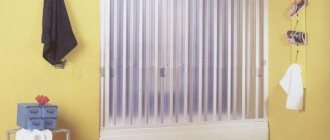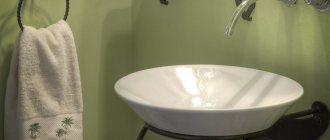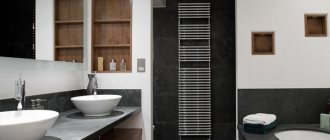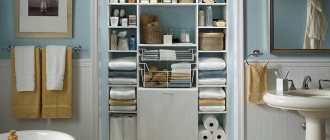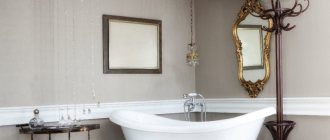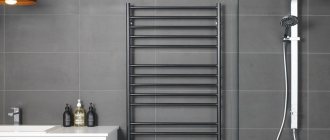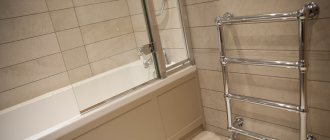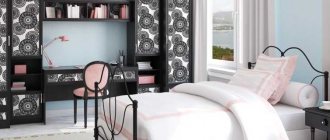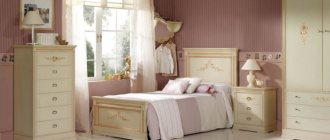There are many plumbing fixtures installed in bathrooms, each of which is connected to water supply and sewerage systems. Siphons, taps, meters, hoses and pipes can ruin any interior, so many property owners try to hide them.
An excellent camouflage option is a tile inspection hatch. The main thing here is to choose a suitable design and install it correctly. Let's figure out what to look for when choosing an inspection hatch and what rules should be followed so that the installed structure will serve for a long time without complaints about its functionality.
What functions do inspection hatches perform?
To disguise electrical and pipelines, as well as the space under the bathroom, special boxes, screens and other similar structures are used.
All of them perfectly cover unaesthetic nodes, but the need for access to communications remains. Audit niches are used for this purpose.
In order to easily inspect and repair plumbing fixtures, pipelines, and replace meters, inspection niches are left. They are closed with special hatches
Some models of hatches for inspection niches are initially designed so that they can be covered with the same coatings that cover the walls: wallpaper, tiles or panels.
Such structures do not stand out against the background of the walls, which is why they are called invisible.
There is plenty of space left under the bathtub. It is usually covered with a screen, and the technical niche with a hatch. These structures can perform not only camouflage functions. If you attach shelves to the screen and place large bottles of cleaning products and detergents in the inspection niche, you can free up space in the wall cabinet and save useful space
Sometimes niches in the walls serve to store a supply of hygiene products, washcloths, towels and other necessary supplies. They perform the functions of cabinets, but do not take up space in the bathroom.
Such storage niches are also covered with inspection hatches under the tiles, and they do not attract unnecessary attention.
Technical niches covered with hatches not only camouflage equipment, but also protect against accidental mechanical damage, moisture, and sudden temperature changes.
Thanks to invisible hatches, you can give free rein to your design imagination and not worry that pipes or wires will hopelessly ruin the interior. They can be hidden and easily accessed if necessary. The main thing is to periodically carry out technical inspections so that pipeline leaks or meter breakdowns do not appear behind the beautiful facade.
Classification of inspection hatches
There are many varieties of inspection and technological vents offered by manufacturers. But there are a number of factors and characteristics by which you can qualify “invisible” hatches and combine them into groups. Let us list and consider these qualifying features to make it easier to navigate when choosing the right type of product.
Qualification of hatches by opening method
There are four basic designs of inspection hatches, which can also be divided into subgroups according to the number of sashes and the type of locking mechanism. Let's look at these four designs.
Hinged hatch – “invisible”
This is the most common design of a hidden bathroom device, which can be single or double-leaf. When closed, the tiled door is flush with the base trim. When opening, the entire surface of the sash is first pushed away from the wall, and then swings open on special internal hinges.
Hinged hatch
If the door is locked with an internal twist-and-press type lock, then to open it a removable handle is used, which is inserted into the keyhole. When using a system of magnetic clamps in the design, the sash is opened using auxiliary removable suction cups with handles.
Advantages: relative ease of manufacture and installation, affordable price range, possibility of installation in walls and floors.
Disadvantages: to open the sash, space is required in front of the hatch within the radius of rotation of the door; in the open position, the sash hangs on its hinges and puts a load on them.
Sliding inspection hatch
The price of products of this design is higher, but it is also affordable and pays off due to the manufacturability of the device. When opened, the sash moves forward with its entire area, and then, thanks to special three-phase hinges, moves to the side parallel to the wall.
Sliding sunroof
The sliding door for locking in the closed position can also be equipped with a magnetic locking system or a twist-and-press type lock. To pull the door towards you, depending on the type of lock, use a removable rotary handle or an auxiliary suction cup.
Advantages: opening the door does not require much space in front of the hatch, less load on the hinges from the weight of the sash.
Disadvantages: higher price, more complex installation, inability to install in the floor.
Pressure hatch - “invisible”
If the bathroom is decorated with mosaics or tiles with a corrugated surface, then using an auxiliary suction cup to open the sash is impossible, so it is better to use a pressure hatch on such a partition. When you press the sash, it moves flat forward, and then, depending on the type of hinges, it swings open or moves to the side. The door is closed by pressing it and pressing it into the opening until it clicks.
Push inspection hatch
Advantages: easy to lock, no need to use a handle or suction cup to open.
Disadvantages: relatively high cost, less tightness due to low force on the seal, the possibility of installation in the floor only in places inaccessible to walking.
Folding secret hatch
A folding-type inspection window is distinguished by a vertical trajectory of movement of the sash and the ability to remove the door after partial opening or leave it in a half-open position, fixed with special carabiner hinges. Folding hatches in the bathroom may also not have hinges in their design at all - the flap is removed from the groove in the wall and set aside.
Hatch
The locking device on tilt hatches is of the rotary-clamping type (option with hinges) or magnetic type (without hinges).
Advantages: can be used in hard-to-reach places.
Disadvantages: inconvenient installation of the sash and, possibly, correction of its position after each technological removal.
Qualification of hatches by material of manufacture
Inspection devices, depending on the size, are made of the following materials:
Hatches made of plastic
To make small-sized secret hatches in the bathroom that do not experience heavy loads from their own weight and finishing tiles, reinforced plastic is used, which is practical in rooms with high humidity.
Plastic inspection hatch
For small product sizes, reinforcement compensates for the lack of strength of the material and prevents thermal deformation, and the dielectric properties of plastic are an important advantage of such hatches. In addition, the low thermal conductivity of plastic allows you to do without thermal insulation when installing the product.
Metal viewing inspection devices
Steel hatches are durable, but their high specific weight imposes restrictions on the size of the product. In addition, steel is susceptible to corrosion, especially in places of welded joints, therefore, in rooms with high humidity, installation of steel inspection devices is impractical due to the need for periodic repair of the protective anti-corrosion coating.
Aluminum inspection hatches have two advantages over steel ones - low specific weight and resistance to moisture. The strength, which is lower than that of steel, is compensated by the relatively low weight of the devices, which makes it possible to produce hatches of significant dimensions. Parts of aluminum devices are connected by special welding in an inert gas environment.
In the designs of large-sized inspection hatches, in order to reduce their weight, a combination of a steel frame with an aluminum front plate of the sash is also used, but these dissimilar materials at the points of contact are isolated from each other to avoid corrosion.
Metal inspection hatch with suction cup
The thermal conductivity coefficient of metals, especially aluminum, is high, so the doors of metal hatches are equipped with thermal insulation from the inside.
Qualification of secret hatches at the installation site
According to the place of installation, inspection hatches are divided into the following subtypes:
- wall;
- floor;
- ceiling;
The requirements for wall hatches for tiles were discussed above, and the choice of product depends on the operating conditions. And floor-mounted inspection devices, when installed in areas where people walk, must have a high-strength design. In addition, it is advisable to choose floor hatches with shock absorbers that make it easier to lift the sash, and a pressure-type lock that ensures a tight fit of the lid to the frame and better sealing to prevent water from entering under the door and onto hidden equipment.
Due to the specific location, a hatch for installation in the ceiling (ceiling) must be made of lightweight materials - aluminum or plastic and, in order to minimize the weight of the product, they are not finished with ceramic tiles after installation. But the use of polystyrene foam tiles for ceiling cladding allows these devices to be made invisible and aesthetically pleasing.
Design features of the models
Hatches are installed in different parts of the room - in ceilings, walls, floors. In many ways, the design of each specific model depends on the intended location. Two main parts remain unchanged - the frame and the door; other elements can change depending on operating conditions.
Each model has its own design features, but the basic principles of their design are approximately the same: frame, hinges and door
The model of the plumbing hatch is also selected according to the size of the technical niche. They are usually 20x20-120x120 cm. The frame is firmly installed in the opening, and then the doors are mounted. Most often they are mounted on hinges, which can be made of metal or plastic (depending on the frame material).
There are two main types of frames:
- Adjustable . The owner can independently choose the size of the frame, and the excess material is simply cut off with a suitable metal tool.
- Unregulated . The size of the hatch is set during its manufacture and cannot be changed.
There are also frameless models. They are mounted using magnetic plates, and the main elements are fixed with silicone sealant or other suitable adhesives. Combined hatches are fixed using a frame and magnetic plates.
The materials from which hatch frames and doors are made are varied. Aluminum is most often used for frames, and doors can be made of metal, plastic, aluminum, plasterboard, polystyrene foam
Inspection hatches are opened using suction cup handles. Push-type models are also common, which move away after pressing on the door plane.
Depending on the location of the niche, you can find a hatch that opens to the left or to the right. There are models that move in a vertical plane.
Image gallery
Photo from
Inspection hatch for floor tiles
Hatch for masking communications on the ceiling
Design of inspection niches in the wall
Invisibility hatch with removable door
Inspection hatches are convenient designs that perfectly hide communication connection points without compromising freedom of access to them. They are easy to install and operate, and are reliable.
The structures do not require any special care: the surfaces of the doors can be washed with the same products that are used for walls.
Some designs are equipped with powerful opening mechanisms that can withstand significant weight. Such models can be safely finished even with heavy materials, for example, artificial or natural stone
When using the inspection hatch, you only need to monitor the condition of the opening mechanism, lubricate it with machine oil in a timely manner and carry out minor repairs as necessary. Then the hatch will last as long as the wall decoration as a whole.
In some cases, you can even replace the tiles on the door surface if you carefully remove the old covering.
Basic elements of plumbing hatches
Conventional invisible plumbing hatches for tiles are made of several elements:
- An aluminum frame and door on which a panel made of moisture-resistant gypsum fiber sheet (GVLV) is mounted.
- Magnetic lock.
- A special system of loops and knots for adjustment.
Most often, sanitary doors are made of moisture-resistant material (treated chipboard, OSB, plasterboard). The frame is installed in a wall or niche. The lock is triggered by external influences, holding the door in the grooves of the niche.
The hinge mechanism and adjustment are the most important part, since these elements directly determine how and in which direction the hatch opens. For simple options, hanging or furniture hinges may be suitable for these purposes. In more complex ones - double ones with additional adjustment units.
When choosing doors for tiles, dimensions are also important to consider. The standard dimensions of hidden inspection hatches require a minimum size of 10x10 cm; finished products use hatches that are sized to fit regular 20x30 cm tiles.
When working with arbitrary sizes, craftsmen try to bring them closer so that the ceramic products can completely fit on the curtain. This approach will make it possible to “disguise” the hatch as a tile. The specific dimensions directly depend on what the inspection door is intended for and where the pipes or cables are located.
The largest ready-made option can be considered a hatch door measuring 120 cm. Doors made independently, which differ from the usual parameters, can be adjusted to the following dimensions: no less than 5-50 mm of tile stock on the fixer with a wall, no more than half of the tile’s own parameters on the free side.
The secret hatch under the tile opens as follows: you need to press the center on the side of the hinges, after which the magnetic lock will open and the inspection hatch door will come out of the frame.
Opening mechanisms
Manufacturers install the following door opening mechanisms:
- swing;
- push;
- folding;
- sliding
Each type of opening has its own advantages. When choosing, you should focus on ease of use.
Image gallery
Photo from
Swing door opening mechanism
Invisibility hatch with push mechanism
Sliding mechanism with three-link hinges
Hinged hatch for hard to reach areas
It is hardly possible to come up with a more convenient opening mechanism than a hinged one. However, an audit is often needed where access is difficult due to equipment or furniture. Then folding and sliding models come to the rescue.
If there is space on at least one side, then it is better to choose a sliding mechanism. And for areas with difficult access, folding structures with the ability to completely remove the door are more suitable.
The nuances of choosing the right hatch
When choosing a size, focus on the following parameters:
- Dimensions of a technical niche . The opening can be blocked or expanded a little, but in general the hatch must correspond to the niche, otherwise access to the equipment will be difficult.
- Door dimensions. The ratio of the parameters of the supporting frame and the hatch itself may be different. It is necessary to clearly determine how much space is required for a detailed inspection and repair of communications.
- Tile size. Wall finishing materials are usually purchased in advance, and this makes choosing a door easier. The tile should protrude beyond the surface of the hatch by 0.5-0.7 cm (or better, the maximum protrusion should be no more than 5 mm). It is also important that each tile is securely fastened: more than 60% of its area should be located on the hatch door.
For a spacious bathroom, you can choose a hinged hatch, but for a cramped one, a sliding or folding model is better.
If the opening of the inspection niche is located on a plasterboard partition or false wall, then you should give preference to a lightweight folding structure on an aluminum frame.
An excellent option is to install a model with gas shock absorbers. When purchasing, you should carefully check the package and make sure that it includes spring mechanisms. If not, you will have to purchase them separately
There are many manufacturers of inspection hatches whose products are worthy of attention.
The top three invariably include the following brands:
- " Phantom ". The main advantage of hatches from this brand is their powerful, reliable hinges that can withstand significant loads. Even doors with heavy finishing do not sag over many years of use.
- " Hammer ". A special feature of the Hummer models is their high-strength frames. The secret of their quality lies in the assembly features: the manufacturer uses argon-arc welding.
- " Glory ". These are hatches with wear-resistant fittings that can withstand almost any weight of the finish. The doors of the models can be lined with ceramic tiles and even natural stone. They are not deformed.
The range of invisible hatches is extensive, and there is sure to be a suitable model for every inspection niche. It is important not to save money and buy a structure with a durable frame and good fittings.
Sometimes large technical niches are made, for example, if it is necessary to disguise a boiler, distributor, filter, meter, cold and hot water collector or other equipment behind a false wall. Often a large inspection niche is required in a toilet or combined bathroom for sewerage maintenance. If you cannot find a hatch of suitable dimensions, then you can resort to other methods of masking communications.
The frames of two-door inspection hatches are made of durable materials. They must withstand high loads. If the size of the niche is large, and the door is planned to be finished with ceramic tiles, it makes sense to order a reinforced structure
If the opening width exceeds 70 cm, you can choose a single-door hatch with a durable frame and a powerful opening mechanism, but it is better to opt for a two-door model. Most often, such hatches are equipped with push or swing opening mechanisms.
In the second case, the kit additionally includes suction cup handles.
Some manufacturers have made sure that buyers see installation instructions. They placed it directly on the cardboard in which the models are packaged. If you buy a two-door design, you should definitely familiarize yourself with the technology of its installation.
The maximum size of the standard two-door model is 120 x 160 cm, but an even larger hatch can be ordered if necessary. In this case, you should decide in advance on the size of each door.
They are calculated depending on the chosen tile: it is necessary that when opening the doors they do not cling to each other, but at the same time they are beautifully decorated with finishing material.
Two-door tile models can be equipped with any opening mechanism. The most convenient and reliable doors are hinged ones. However, the location of the inspection niche can be inconvenient for opening them. Then it makes sense to consider other options
As for door materials, when choosing two-door inspection hatches it is better to give preference to models made of moisture-resistant gypsum fiber board. The option of drywall should not even be considered, because... it will not withstand heavy loads, will quickly deform and fail. Its only advantage is its low cost.
Material and dimensions
Plumbing hatches for bathroom ducts are made from various materials that are resistant to high air humidity, temperature changes and contact with water. Steel models are considered the most reliable and durable, but they are quite expensive. Plastic hatches are characterized by low strength, so they are small in size and have the simplest opening mechanisms. The following requirements apply to the material from which the product is made:
- Resistant to high humidity. In the bathroom, contact with water cannot be avoided; even inside the box, the product is not protected from moist air, so the material should not enter into oxidative reactions with oxygen. Plastic models have the best moisture resistance.
Plastic hatch
- Strength. Ceramic tiles are glued to the hatch door, masking the structure, so it must withstand a lot of weight without deforming. In this indicator, steel models are much ahead of cheaper plastic ones.
Hatch for tiles
- Machinability. To hide the door of the inspection hatch, apply a layer of putty on it, paint it, or glue decorative tiles with your own hands. That is, the material is chosen so that it matches the selected type of finishing material.
Note! The dimensions of the inspection hole are selected based on the purpose, the dimensions of the equipment hidden inside the box, and the specifics of the finishing material.
The minimum size of the hatch is 10x10 cm; it only allows you to view and record the meter readings. The largest plumbing hatches have a size of 180x200 cm, but they are used only in important communication nodes, where repairs and troubleshooting are carried out by two or three people.
Instructions for installing a hatch under tiles
Work on installing an inspection hatch can be divided into several stages:
- Preparing the opening.
- Installation of frame with doors.
- Finishing the outer surface of the doors.
- Finishing work.
Each stage involves several types of work. To avoid any difficulties, we offer useful installation tips with illustrations:
Image gallery
Photo from
Stage 1 - preparing the hatch and opening
Stage 2 - installation of an invisible hatch in the niche opening
Stage 3 - sealing the seam between the structure and the wall
Stage 4 – finishing the inspection hatch with tiles
After installation, all that remains is to make sure that the hatch functions normally, the seam is neat, and the tiles do not cling to anything when opening the door. If everything is in order, the structure is completely ready for use.
